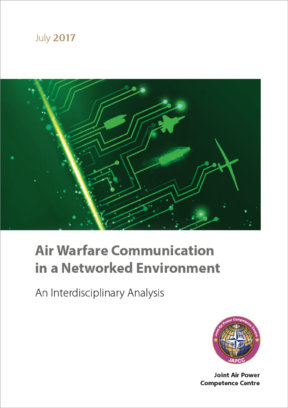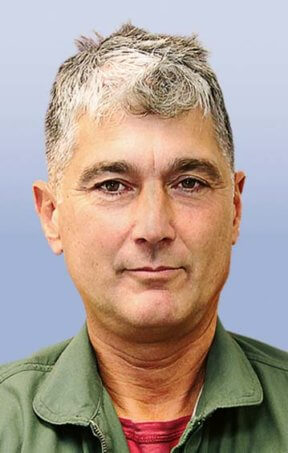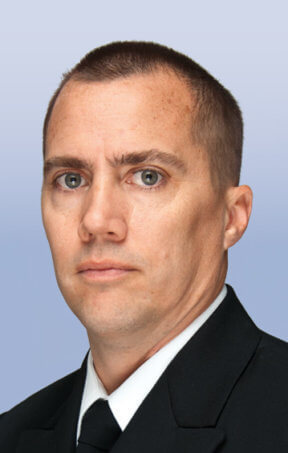Executive Summary
Network technology is expanding at an exponential rate. As technology improves, effectively unlimited connectivity is no longer strictly a future concept; however, combined decision-making and data sharing processes (or maybe ‘protocols’) are not evolving at the same speed as technology. Machines will boost communication in a networked environment to levels yet to be determined. This will require nations and the Alliance to alter current communication patterns. Recent studies have provided metaphors to relate the communication within networks comprising men and machines, most notably references in the military spectrum to combat clouds and killing webs. These metaphors highlight the need for humans and artificial intelligence to develop new ‘social contracts’ in the form of new communication patterns in order to achieve the desired effects on the battlefield while still complying with the Commander’s intent. Furthermore, tactical scenarios that require the integration of 4th, 5th and future generation assets will have to be analysed under a new, more general C2 concept in order to avoid mixing tomorrow’s capabilities with yesterday’s C2 structures.
The study is broken down into four sections, the first being the introduction.
The second part (Chapters 2 – 6) provide an academic foundation, which will define the environment through detailed analysis of platforms, machines and systems of machines. These platforms interact to perform air power functions. This part will close by exploring models to help understand the relationship between communication levels and C2 and will likely be most interesting to the academic community working in the field of robotics and behavioural sciences.
The next part (Chapters 7 – 9) provides an operational perspective, taking the academic discussion and the explored models from the previous chapters and extrapolating them onto aircraft and air power functions and operations. It reviews trends in the evolution of air power and provides statistical analysis of efficiency realized through advances in technology, such as Link 16. This part will likely be most interesting to proponents of air power, not only those who fly aircraft today, but also historians, strategists and policymakers.
The final part (Chapters 10 – 13) is a vision of the future, offering a thorough review of future concepts including Dynamic Airspace Synchronization. Along with proposals for a new way of thinking about the future of Joint Air Operations, the command function and C2 writ large, this final part blends the conclusions derived from the previous parts and offers points for consideration in the use of air power as technology continues to advance. This part will likely be most interesting to current and future senior decision makers within the NATO Command Structure and to those with interest in NATO’s Air C2 system.
This study explores how improved communication capability (between man and machine as well as between machines themselves) will change the way by which NATO conducts Air C2. It recognizes that data processing speeds have improved exponentially and new mission computers and communications gateways are significantly cheaper than new platforms, but also that unrestricted communication is not always a global solution for every tactical or operational problem. While many studies today are focused solely on 4th–5th generation aircraft interoperability, this study takes a broader look at the entire networked operating environment, of which plane-to-plane connectivity and interoperability are but a subset. In doing so, it begins with a critical assumption that certain levels of networking and linking have already been achieved in order to look at the behaviour of air platforms in this future networked environment. The advent of technology that improves methods of communication across the air domain offers an opportunity to explore ways to transform the level of Command and Control across NATO. Furthermore, the diversity and asymmetry of Joint Air capabilities across the Alliance may necessitate such a transformation in the framework of improved communication to ensure future interoperability.
According to SACT’s perspective1, Command and Control is comprised of four interconnected phases: collecting, decision-making, effecting and connecting. This communication-based process replicates the ‘sensing, interpreting, deciding, and acting’ sequence present not only in human behaviour, but also in that of other organisms or mechanisms. NATO’s C2 poses a unique command challenge as it requires consensus among 28 nations. It must solve the complex challenges of diversity and asymmetry through consensus at the Strategic level, and through integration and interoperability at the Operational and Tactical C2 levels.
Positive transformation into new topologies for air power execution may be approached through different paths. Air, Maritime and Land battlespaces will likely be redefined into a more holistic joint battlespace. Different platforms will not necessarily be tied to certain specific roles within the respective Component, rather machine-speed decision-making will permit dynamic re-tasking and re-allocation of force packages without regard to service or nationality. These packages will be matched real time to an evolving situation, which will make the network and the platforms operating within the network more responsive, adaptive and effective. The study approaches this concept with the understanding that information sharing limitations, national security, and other caveats, constraints and boundaries are still present. Regardless, communication within the network is the main factor driving evolution within the Alliance. NATO must sustain the technological advantage that has defined NATO’s Joint Air Power over the last decades.
Borrowing the concepts of Command and Control maturity levels and the methods by which the levels may be increased expressed by Alberts et al.2 (specifically that a more mature system is more efficient and effective), this study begins with a review of Command and Control and different levels of maturity of the C2 system as a function of communication. The panel that developed the ‘NATO NEC Maturity Model’ for C2, referenced frequently throughout this study, concluded that decision rights allocation, patterns of [platform] interaction, and distribution of information all impact the evolution of Command and Control. This study expands upon that principle and identifies that the distribution of information in the form of higher degrees of communication is the area most easily addressed by NATO and could result in movement toward a higher level of C2 maturity within the Alliance.
The central thesis of this study, that hyper-communication will increase maturity in the current C2 structures, is then further explored from the perspective of the synchronization of different platforms featuring different functions and operating within a complex system. Extrapolation from analysis of the communication patterns of biological examples is applied to statistical analysis of NATO aircraft behaviour evolution in a pre- and post-Link 16 era. This concept is then further applied to future air platforms operating with improved communication capability enabled by the increased information exchange rates in the future network. This is then juxtaposed against NATO’s current Air C2 doctrine to highlight how, in the future, NATO might have to automate certain levels of decisions to achieve advances in C2 maturity.
One of the central premises of this study is that the ‘Command’ part of C2 will not fundamentally alter during the course of C2 evolution. The allocation of decision rights regarding critical parts of the Kill Chain (primarily kinetic engagements) must remain in human hands. A second premise is that the future ‘net’ is a cognitive and adaptive network which is fast, robust, resilient, and redundant. This vision of a net is conceptual, but when this net becomes a reality, C2 will change with it, introducing automatic features in certain activities and functions, which will remain consistent with the Core Roles of Air Power identified in the AJP 3.3 series.
Many steps in the F2T2EA (Find, Fix, Track, Target, Engage, and Assess) model can be more efficiently done at machine-to-machine speeds, controlled and synchronized by cognitive computing which is managing this future network. Recognizing that the ‘Engage’ function is primarily tied to the Command and Kill Chain issue described above, improving the speed of the other steps of the process will speed up the OODA loop and increase operational tempo for the Joint Commander while leaving lethal decision-making in human hands.
Machine-to-machine communication through datalink could potentially replace some functions that today are either human action or voice dependent. Automated actions, such as auto-sorting and weapons management, across the flight formation (resident in a few nations’ missile allocation capability), third party targeting, or research into manned and unmanned teaming, have already approached this level of collaboration. However, this is by no means a capability fully realized across NATO’s Joint Force. Hyper-connected platforms become mutually supporting enablers from a bottom-up perspective (platform level), and a hierarchy within their functions and roles may address mutual support and other needs through the depiction, in real time, of who has the best available position, sensor or weapon in support of the Commander’s decision.
Contextually, the force behaves as a faster whole through communication. One platform’s sensor may coordinate for a second platform’s weapons system to engage while using a third platform as a jammer, or as a SEAD asset with the proper platform’s configuration. Altogether, they would share a software-driven motion policy and behave as the aforementioned whole. Today, coordinating this relatively basic synchronization of functions requires time (human speed) and likely relies on voice communications for both coordination and most levels of execution. This is likely not a survivable model in a future, contested networked environment.
The method by which NATO develops and utilizes airspace, founded upon the principle of avoiding fratricide, limits flexibility and in many cases makes real time synchronization more challenging. This future network, and its capability for coordination between platforms at machine-to-machine speeds, offers the new possibility to dynamically co-utilize airspace as opposed to today’s segregation-based utilization. The cloud metaphor best explains how control distributes through the joint battlespace to allow for higher decentralized execution. This study proposes the term Dynamic Airspace Synchronization (DyAS) to discuss potential real time co-use of airspace by multiple disparate entities across the Joint Force, including both air and surface based Air Power platforms.
The value in this study, and its subsequent relevance to NATO, is to define air platform behaviour in a future networked environment so the development of the datalink network and the future command structures can evolve in concert with the likely behaviour of the assets over which they will exert control.
Finally, the authors would like to thank many organizations for the tremendous support and engagement for various aspects of research during this project, including the officers from the Combined Air Operations Centre, Uedem; Dr. Robbin Laird, Second Line of Defense; Officers of the Tactical Leadership Programme; European Air Group, Swarmlab, Department of Data Science and Knowledge Engineering (DKE), at Maastricht University (NL); thefightercommunity.com; ACAR Navacerrada (ESP AF); and engineers at CLAEX (Centro Logístico de Armamento y Experimentación, ESP AF) for taking the time to meet or host during the research phase.













